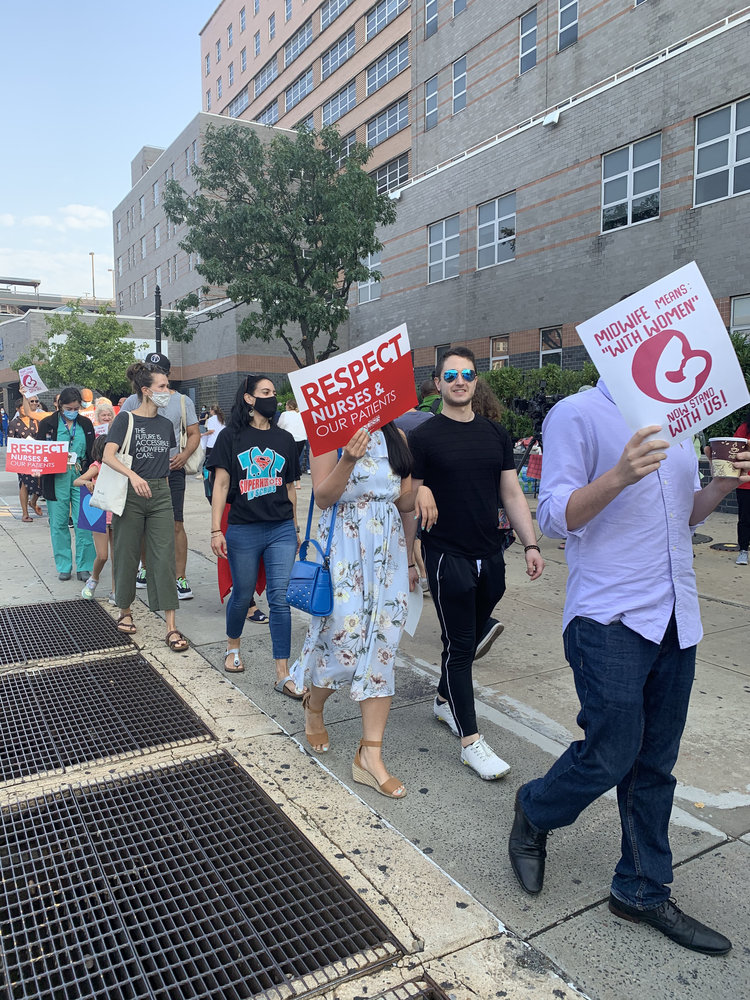Live music returned to Forest Hills Stadium for the first time since 2019, giving thousands of concert-goers in Queens a reason to celebrate and a brief return to normal.
The historic outdoor venue officially reopened on Friday, July 23, as Brandi Carlile took the stage before 8,000 fans, kicking off the stadium’s summer concert series on a high note.
The 14,000-seat capacity venue, located at the West Side Tennis Club, will soon be hosting additional live performances, after a season of concerts were lost due to the pandemic.
As part of New York City’s “Homecoming Week,” the stadium will also host a free concert on Friday, August 20, as announced by Mayor Bill de Blasio last month.
Mario DiPreta, CEO of the West Side Tennis Club (WSTC), says the reopening of the unique venue comes at a time when fans need it most. After hosting a successful first live show back, DiPreta recalled what it was like to welcome live music fans back for the first time in over a year.
“It was amazing to make sure that we could actually do a concert again and get back to some sort of normalcy,” said DiPreta. “The energy was amazing, the crowd was singing to the music. It’s one of the most amazing venues and unique too, there’s not one like it in the world.”
Built in 1923, the outdoor concert venue sits on 13 acres owned by the private tennis club, which played host to the US Open until 1977. It’s where Arthur Ashe became the first African-American to win a Grand Slam tournament in 1968, and it’s where Billie Jean King played while she campaigned for equal prize money and opportunities for women in tennis.
The stadium also hosted legendary musical acts in the 1960’s and 1970’s, including Bob Dylan, Jimi Hendrix, and Simon and Garfunkel. In 1968, The Beatles were flown into the stadium by helicopter before performing in front of a sold-out crowd.
“It’s where legends walked the grounds, from tennis to music,” DiPretta added.
But following the US Open’s departure to Flushing Meadows in 1978, the structure began to decay and deteriorate, eventually leading to a denial of landmark status by the Landmarks Preservation Commission in 2011.
WSTC even weigned the option of having the stadium replaced with luxury condominiums, before voting the idea down. The stadium was in need of rehabilitation if it was ever going to host live concerts again.
That’s when promoter Mike Lubo made a cold call to the WSTC pro shop, seeking an alternative site for a band to play a gig. Lubo, who grew up on Long Island, was aware of the legendary performances and artists who took the stage at Forest Hills Stadium decades ago.
“In one of the great turn of events, the stadium was not landmarked, which enabled us to come in and do the stuff we did,” said Lubo, now the lead promoter for the venue. “The day after the first phone call, I came out here with a structural engineer.”
Lubo recalls the engineer describing the site as “feeling like a warzone”, and Lubo likened the place to, “a dumping ground for three decades.”
But a commitment was made by Lubo and his team to keep the “bones” of the stadium — built upon first-generation U.S. Steel and poured concrete — and to focus on leading the venue into the 21st century.
After holding their inaugural concert in 2013 with Mumford & Sons, gradual improvements were made to the site’s amenities and safety, including new seats, new aisles and a new world-class stage.
“Our happiest moment was when we finally put real bathrooms out here,” said Lubo.
Now there is a commitment to upgrade the stadium following each concert season. From just one single show in 2013, to well over a dozen just a few years later, the revival of a historic venue is well under way.
But that was all put on pause last March. Live entertainment came to a halt, along with the venue’s expected 2020 concert season. It would be another 16 months before fans flocked to Forest Hills Stadium once again.
“We were probably the first major industry to fully shut down,” said Lubo. “It’s been a long run of scheduling and rescheduling. Our first priority is that the bands, the crew and the fans are safe.”
When COVID-related restrictions were lifted for New Yorkers in June, it allowed for the venue to host live shows once again. Under current guidelines, shows do not require proof of vaccination. Tickets for shows are available at foresthillsstadium.com.
Lubo said it was an emotional return for some when the stadium hosted fans again for the first time in over a year.
“Music and communal gathering is such a big part of what it means to be human,” said Lubo. “I think people really have been missing that in their life.”
UPCOMING CONCERTS
Fri. Aug 20, “Homecoming Week” free concert series
Sat. Aug. 21, Wilco & Sleater Kinney, Nnamdi
Sat. Aug. 28, Dropkick Murphys, Rancid
Thu. Sep. 9, King Crimson, The Zappa Band
Fri. Sep. 10, My Morning Jacket, Brittany Howard
Sat. Sep. 11, My Morning Jacket, Brittany Howard
Sat. Oct. 2, The Neighbourhood



